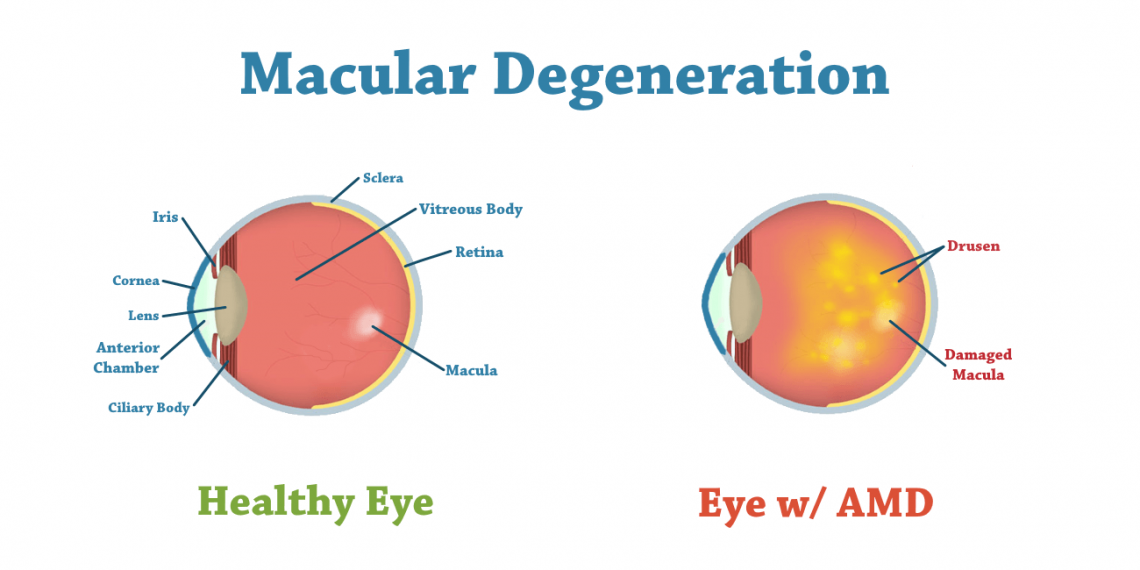
Age-related macular degeneration (AMD) is an eye disease that may get worse over time. It’s the leading cause of severe, permanent vision loss in people over the age of 60.
It happens when the small central portion of the retina, called macula, wears down. The retina is the light sensing nerve tissue at the back of the eye.
Types of Macular Degeneration
There are two main types of age-related macular degeneration;
- Dry Form – people with this may have yellow deposits, called drusen, in their macula. A few small drusen may not cause changes in the vision. But as they get bigger and more numerous, they might dim or distort the vision, especially when reading. As the condition gets worse, the light sensitive cells in the macula get thinner and eventually die. In the atrophic form, the patient may have blind spots in the center of their vision. As that gets worse, they might lose central vision.
- Wet Form – a more visually threatening condition and accounts for 10-20% of macular degeneration cases. Wet macular degeneration is caused by leaky blood vessels in the retina. These abnormal blood vessels may leak fluids or blood into the back of the eye. Patients with wet macular degeneration typically experience more significant vision loss than those with the dry form. The vision loss caused by the wet form is often noticed by the patient once the condition is very serious.
Symptoms of Macular Degeneration
Early signs of vision loss from Macular degeneration include shadowy areas in the central vision or unusually fuzzy or distorted vision. Some patients may notice wavy or distorted words when reading.
Additional symptoms include difficulty seeing details in poor lighting conditions and glare sensitivity. Many patients do not notice the symptoms of macular degeneration if they are present in only one eye or more pronounced in one eye than the other. When viewing with both eyes simultaneously the symptoms of blur and distortion may not be noticed.
Treatment
There’s no cure for macular degeneration. Treatment may slow it down or keep the patient from losing too much of their vision. The options might include;
- Anti-angiogenesis drugs – these medications block the creation of blood vessels and leakage from the vessels in the eye that cause wet macular degeneration.
- Laser Therapy – high-energy laser light can destroy abnormal blood vessels growing in the eye.
- Photodynamic laser therapy – the doctor injects a light sensitive drug into the bloodstream, and it’s absorbed by the abnormal blood vessels. The doctor then shines a laser into the eye to trigger the medication to damage those blood vessels.
- Low vision aids – these are devices that have special lenses or electronic systems to create larger images of nearby things.
What We Offer
We at Almurshidi Medical Tourism will find the best doctors to cater to your needs. We are partnered with a wide network of hospitals and clinics that provide top quality medical experience.
We provide free medical estimates, make medical appointments, and provide several medical opinions if needed at no cost.
Contact Us
For more information contact us at +66822004040 or via WhatsApp








